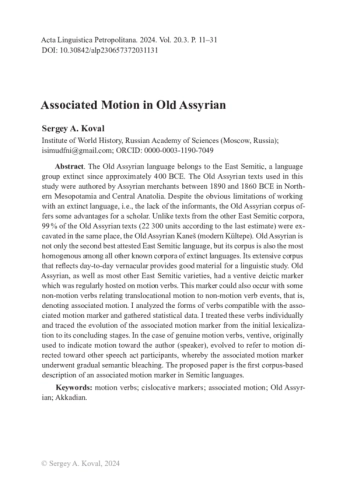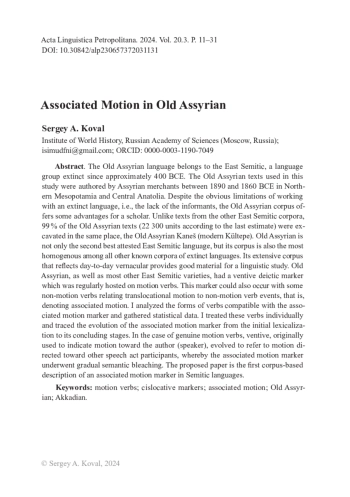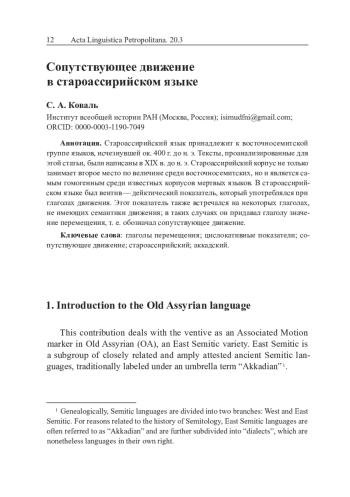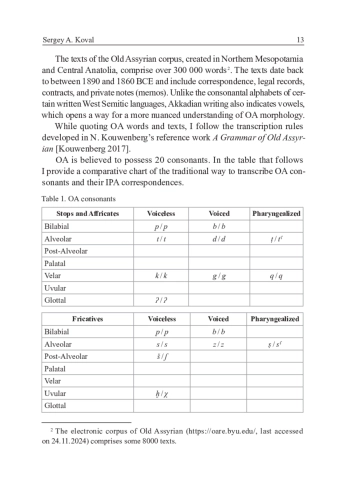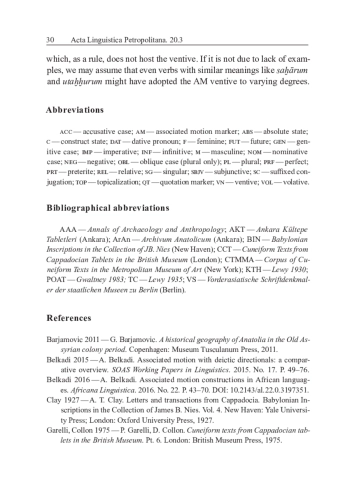Староассирийский язык принадлежит к восточносемитской группе языков, исчезнувшей ок. 400 г. до н. э. Тексты, проанализированные для этой статьи, были написаны в XIX в. до н. э. Cтароассирийский корпус не только занимает второе место по величине среди восточносемитских, но и является самым гомогенным среди известных корпусов мертвых языков. В староассирийском языке был вентив — дейктический показатель, который употреблялся при глаголах движения. Этот показатель также встречался на некоторых глаголах, не имеющих семантики движения; в таких случаях он придавал глаголу значение перемещения, т. е. обозначал сопутствующее движение.
The Old Assyrian language belongs to the East Semitic, a language group extinct since approximately 400 BCE. The Old Assyrian texts used in this study were authored by Assyrian merchants between 1890 and 1860 BCE in Northern Mesopotamia and Central Anatolia. Despite the obvious limitations of working with an extinct language, i. e., the lack of the informants, the Old Assyrian corpus offers some advantages for a scholar. Unlike texts from the other East Semitic corpora, 99 % of the Old Assyrian texts (22 300 units according to the last estimate) were excavated in the same place, the Old Assyrian Kaneš (modern Kültepe). Old Assyrian is not only the second best attested East Semitic language, but its corpus is also the most homogenous among all other known corpora of extinct languages. Its extensive corpus that reflects day-to-day vernacular provides good material for a linguistic study. Old Assyrian, as well as most other East Semitic varieties, had a ventive deictic marker which was regularly hosted on motion verbs. This marker could also occur with some non-motion verbs relating translocational motion to non-motion verb events, that is, denoting associated motion. I analyzed the forms of verbs compatible with the associated motion marker and gathered statistical data. I treated these verbs individually and traced the evolution of the associated motion marker from the initial lexicalization to its concluding stages. In the case of genuine motion verbs, ventive, originally used to indicate motion toward the author (speaker), evolved to refer to motion directed toward other speech act participants, whereby the associated motion marker underwent gradual semantic bleaching. The proposed paper is the first corpus-based description of an associated motion marker in Semitic languages.
